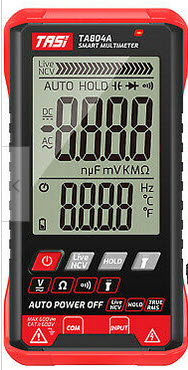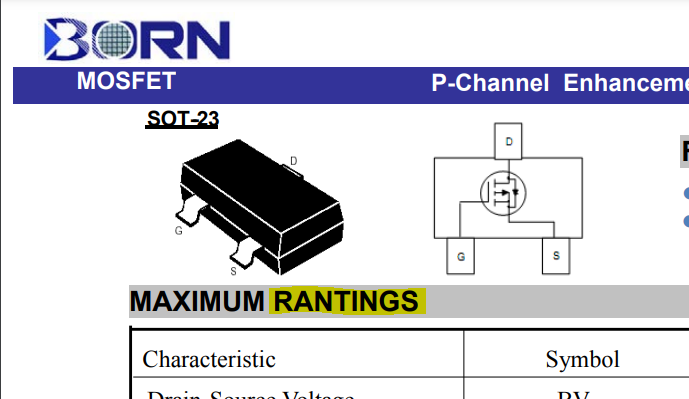|
||||||
You may redistribute this newsletter for non-commercial purposes. For commercial use contact jack@ganssle.com. To subscribe or unsubscribe go here or drop Jack an email. |
||||||
| Contents | ||||||
| Editor's Notes | ||||||
|
Tip for sending me email: My email filters are super aggressive and I no longer look at the spam mailbox. If you include the phrase "embedded muse" in the subject line your email will wend its weighty way to me. The Embedded Online Conference will take place next month. I'm giving a talk titled "Learning From Disaster". The cost for the entire conference is $190, but if you register here with the promo code GANSSLE it goes down to $149. This event was a huge success last year. |
||||||
| Quotes and Thoughts | ||||||
Vannevar Bush felt that the success of any engineer's plan often depends on good writing: "Once the plan has been decided upon, he must convince his superiors that the plan should be carried out. This convincing requires that the engineer write brief clear English, which adequately and concisely conveys the meaning in a convincing way. Good proposals have been turned down because the engineers who drafted them could not present them in convincing form." |
||||||
| Tools and Tips | ||||||
|
Please submit clever ideas or thoughts about tools, techniques and resources you love or hate. Here are the tool reviews submitted in the past.
Are you using MLCCs to decouple the power rails? If so, everything you know about selecting decoupling capacitors might be wrong. This article is enlightening. Here's an interesting article about debugging analog signals on bare metal. |
||||||
| Freebies and Discounts | ||||||
April's giveaway is a DMM.
Enter via this link. |
||||||
| Convincing "Them" | ||||||
The quote (above) from Vannevar Bush is more important than a lot of engineers realize. In a sense, engineers are the interface between the technology and the rest of the organization. We communicate with the non-techies via the written and spoken word. As such, documents are written with the readers' needs in mind. Technical documents are typically either descriptive or persuasive. Descriptive docs (e.g., requirements, customer needs, code or design explanations) are, as Joe Friday would say, are "just the facts, ma'am." These are accurate and concise enumeration of what is needed or how things work. Bullets are often useful. They need to be pruned of everything not relevant. The reader needs to understand what is going on. These are educational materials. Persuasive writing, on the other hand, is designed to convince someone that some as-yet-unmet objective needs to go our way. Want $50k for that bit of test equipment? Your goal is to prove to the reader, perhaps your boss or a higher-level boss, that the company's bottom line (or some other important metric, one that is critical to someone other than yourself) will be improved by more than the cost of the gear you want. Cite numbers, ones that are believable and substantiated. You're an engineer; your domain is numbers. Give those, but also ameliorate their sometimes daunting impact (some readers hate math) with convincing prose. But make sure the doc is tight and as short as possible, starting with an executive summary that makes your point in a few sentences. Technical writing is not difficult. We're not creating a novel with a plot and interesting characters. Tech writing is about constructing short, declarative sentences. Using active voice. ("Meter A displays the current voltage", not "The voltage that is currently flowing will be displayed by meter A".) Paragraphs should address a single subject and be relentlessly on-point. Jargon and acronyms are often fine, but never use an acronym that either: is not industry-standard, or not previously defined. But avoid them if the target reader won't understand your point. In many ways tech writing is writing like we speak. Edit your work mercilessly. Some writing friends call this "baby killing", as a red pen slashing relentlessly through your prized work might be very painful, but can greatly improve the text. Be sure the document addresses the readers' needs in a clear fashion with language they will understand. Resumes are a form of technical writing. Far too many are poorly written. They don't address the reader's need, which is simply "is this person worth interviewing?" (And, sad to say, when confronting a stack of CVs the reader's first job is to quickly find ways to cull them. Trash as many as possible to avoid wasteful interviews.) For more on them see this. I often get writing that is incomprehensible. Or resumes that stress the irrelevant (e.g., "Mental Health: Improving, but..."). We need to take as much care with the written word as we do with crafting our code. |
||||||
| More on BIST | ||||||
The article in the last issue about Built-In Self Test spawned some interesting email. J.G. Harston wrote:
From Jonathan Morton:
Here's Sergio Caprile's take:
|
||||||
| Abstraction Redux | ||||||
Muse 441 had an article on abstractions. Bogdan Baudis replied:
Eric Smith wrote:
This is from Matthew Eshleman:
|
||||||
| In Honor of April Fool's Day | ||||||
In honor of April Fool's Day, here's an article I wrote for EDN in 1996. A scruffy pair of wingtips were planted two inches in front of my face. I moaned, rolled over, feeling bits of dried blood flake out of my hair. The sour taste of last night's whiskey reminded me that somehow I hadn't made it to that AA meeting. "Wake up, Jake." One wingtip prodded my nose. "You lousy bum. I oughta have your PI license pulled." Lenahan stretched out an hand, yanking me roughly to my feet. "Ain't ya got some speeders to bust?" I asked, trying hard to maintain my balance. Taking stock it was pretty clear to me that balance was all I could ask for, my dignity obviously long gone. Feeling my pockets the night slowly came back. Wallet - gone. She was pretty but greedy. .45 - also missing. Hazily an image of trading it and the brass knuckles for a bottle of hooch formed in my still spinning brain. "Angel's gonna be pissed at ya, Jake. You promised her you'd lay off the sauce." My leggy receptionist was a crusader, out to reform me, not quite understanding how impossible her mission was. I encouraged her, needing her support and willingness to miss paychecks far too often. Lenahan is right - I am a bum. "Your child support payments are six months behind, Jake. I'm taking you in." We'd been through much together, Lenahan and I. He spared my dignity by not cuffing me for the ride downtown. Since they re-instituted debtor's prison back in '98 the character of the jails here in Silicon Valley has changed. Violent criminals are rare, most released to make room for the Valley's hordes of bankrupt electronic executives. I'd moved to Baltimore to get away from hanging judge Tito, who gleefully accepted his low-profile role of incarcerating EEs, but all too often found myself out here on the shores of the Pacific. The joint's like an old home for me; I see it from the inside more than I'd like to admit. The regulars all waved happily. Most of the inmates are lifers. Even while doing hard time they all scheme new scams. You could see it in the graffiti - the walls were covered with schematics and financing plans. "Jake, ya got any overhead transparency material?" a young offender whispered. "I can trade ya a carton of smokes." A few smuggled whiteboards were propped in hidden corners, their owners crouched with fistfuls of multicolored markers, glimpsing furtively over their shoulders every few seconds for a sign of the screws. Evidence of Spike's last test equipment caper were everywhere. Smuggled scopes cast a blue glow over the dirty ceiling. "Psssst - ya got a 20L8?" one gnarled veteran asked in a barely-audible murmur. The poor soul must have been 35 at least. "Hell, who uses them anymore?" I replied, "where've you been, old-timer? It's all PLDs and FPGAs now." He shuffled back to the bunk, grumbling "they keep stealing my copies of EDN." I looked up as a trusty idly pushed a cart down the aisle. "Candy. Playboys. Smokes. Xilinx software" he chanted. Several prisoners greedily grabbed for the latest disks. "Register as John Doe," the pushcart vendor hissed, "you'll get your annual maintenance contract cheaper that way." Three of us shared a tiny room lined with bars. One cellmate was a small man with thick glasses and tasseled shoes. He seemed out of his depth, a novice unable to cope with the hardened prisoners. "I was a venture capitalist" he sobbed, " and they got me for copying Office 7 onto my computer at home. Now these brutes shove business plans at me all day long. I can't take it anymore. I'll do anything to get out of here." The other seemed tougher. His pocket protector showed him to be a man of depth, one who was no stranger to the seamy side of the Valley. "You Jake?" he asked, the question framed like a command. "Yeah." "I need a little job done. This pencil-necked geek" - pointing to the quivering VC - "promised funding for my new product. We get the prototype working and The Organization will take care of marketing it for us. I got an engineer working on it now, and it's almost ready to go. Whatdaya say we bust outa here and you help me get it working?" I had to do something before the DTs set in. "Sure" I agreed, and we set to work on the jail's alarm system. The county-installed system had been improved by countless inmates. Engineers just can't keep their hands off anything, making lousy stuff good and good stuff better. I had enough 10K resistors and clip leads in my pocket, though, that bypassing it wasn't too hard. These folks were not here because of their competence, and the alarm system was now as buggy as the products they designed on the outside. With the alarm deactivated we slipped down through the laundry room and out through the yard. The guards were gone from their posts; no one bothered us as we marched out the front gate. Until, that is, a long white limo screeched to a halt, blocking our view of the street. The door flew open and a meaty hand grabbed me around the throat, drawing the three of us into the car. "Youse check bounced," Bruno growled, a red flush working its way up from his over-starched shirt collar. "You louse. I oughta off you now." "Wait" I squeaked. "I'm good for it, Bruno, really I am. My associates here are just about to do a killer application. You can have half of my share." "70%, and I get two seats on the Board," he demanded. I remembered why I had moved to Baltimore. The Valley is a tough place, where the numbers do the talking, the IPO is the goal, and a decent price/earnings ratio is everyone's dream. I needed a drink, bad, but Bruno had his driver set off at once for the lab. Bruno is the Valley's highest paid electronics consultant, and with him in our gang there was no question we'd get the product to market. We walked down the hallway, technicians scurrying away from Bruno's shotgun eyes and terrified by his reputation. Like an out of control schoolbus he barreled through every obstruction and banged into the lab. "Where's da system?" "Ah! here! Bruno, ah, Mr. Gessapetti." The terrified engineer pointed to a bench cluttered with equipment and debris. "Youse slobs. Hows a artist gonna work with all dis crud around?" Bruno's tree-sized arm swept an Uzi off the bench onto the ground, along with a dozen cans of Jolt and an equal number of Twinkie wrappers. On hitting the floor the weapon fired one burst. Though three people were hit they were only co-op students, so no harm was done. After all, weren't they here to get a taste of what industry was all about? The corporate downsizings back in '99 had set a new tone in business indifference. I pried the stock options from their hands and hid them in my coat. Spike raised his ever-present flask to his lips, tilted his head back, and took a long slow swallow. "It's like this, Bruno," he belched, "no matter what we do, we keep blowing up chips. And I mean blowing them up. Danny the Dynamiter saw the Beta 1 unit smoke and grabbed it. He ran outa here hours ago." I had heard it on the street. Danny claimed to have gone straight, "doing parties" - whatever that meant - but now he was clearly up to no good. "It's gotta be a static control problem" he went on. "We replaced the carpet with anti-static tile, use ozone generators, and even put our own anti-static workstations together." Waving his hands in the general direction of a line of the assemblers I noticed a dozen Slavic faces, their ankles all cuffed to the benches. "We realized the handcuffs are metallic, and it sure increases productivity while eliminating static." So this was where the $7/hour engineers were. Now that DOD no longer tolerated underbidding on contracts, these poor souls must have been downsized into the mob. Their mournful chanting of The Song of the Volga Boatmen punctuated distant shouts of "just ship the damn thing." I made a mental note to talk to Spike about modern management techniques. Bruno's rumbled "whatcha doin, makin assumptions? You assume it's static? Da last guy dat assumed stuff in my outfit is now pushin up daisies. Youse need data and youse need a open mind. Use yer brain." A midget head perched atop his enormous body gave lie to the advocates of phrenology, as I knew Bruno is as smart as he is rich. I could also see the wheels turning as he examined the circuit board. He lightly dragged the back of his hand over the chips. "My fingers don't feel no heat no more," he muttered, "too much soldering. Da back of da hand is much more sensitive to heat. Dis chip is about ta go." A rancid smell announced a stream of smoke from the part's plastic package. Pouring over the schematics the red started moving up from his collar again. I backed away, secretly wishing I were back in the slammer, and not the possible victim of his rage. "Youse driving a cable with fast logic," he roared, "what kinda amateurs you got here? I betcha there's no termination on the receiving end!" I'd seen this performance before. The scope probe was almost lost in his big hands, as he followed the signal as it propagated between boards. With each test he moved the ground clip, a pathetically short segment of wire I knew he used to keep signal integrity. "Look here. Dere's 2 volts a undershoot at the far end of dis." Spike's protestations that the path was only 10 inches overall did nothing to soothe the enraged Bruno. He angrily threw the probe on the floor, commanding Spike to put a Thevenin termination on the receiving gate. "Yeah, right, static. Static. Static my..." his voice faded as he slumped in a chair. Bruno had forgotten more about fast logic than I'll ever know. I sat with him, trying to understand. "Jake, ya gotta understand. Them chip vendors is shipping fast parts," he complained. "Da stuff youse buy today is much faster den da stuff we bought back when we was just learning to hot wire cars. Even wid da same part number. Ya gotta think of every signal as a transmission line." Though the terminator cured the problem Bruno was despondent. "Da schools dese days don't make good engineers. I is da last of da Renaissance men." Trying to soothe him I dragged him into the next room, where Angel's 30th birthday party was in progress. Looking for the bar I spied Danny the Dynamiter standing alone in a corner, a maniacal grin lighting his face, a control unit trailing wires in hand. "Angel!" I yelled, tackling her and skidding under the table. A second later the Piñata exploded, showering candy everywhere. |
||||||
| Failure of the Week | ||||||
A sign of the times or a bug? Ray Keefe sent this:
Christopher Diaz sent this. He wrote "I found this fail while reviewing data sent in by a customer bewildered by the high readings on his monitoring.
Have you submitted a Failure of the Week? I'm getting a ton of these and yours was added to the queue. |
||||||
| Jobs! | ||||||
Let me know if you’re hiring embedded engineers. No recruiters please, and I reserve the right to edit ads to fit the format and intent of this newsletter. Please keep it to 100 words. There is no charge for a job ad.
|
||||||
| Joke For The Week | ||||||
These jokes are archived here. David Cherry sent this excerpt from a datasheet:
|
||||||
| About The Embedded Muse | ||||||
The Embedded Muse is Jack Ganssle's newsletter. Send complaints, comments, and contributions to me at jack@ganssle.com. The Embedded Muse is supported by The Ganssle Group, whose mission is to help embedded folks get better products to market faster. |










